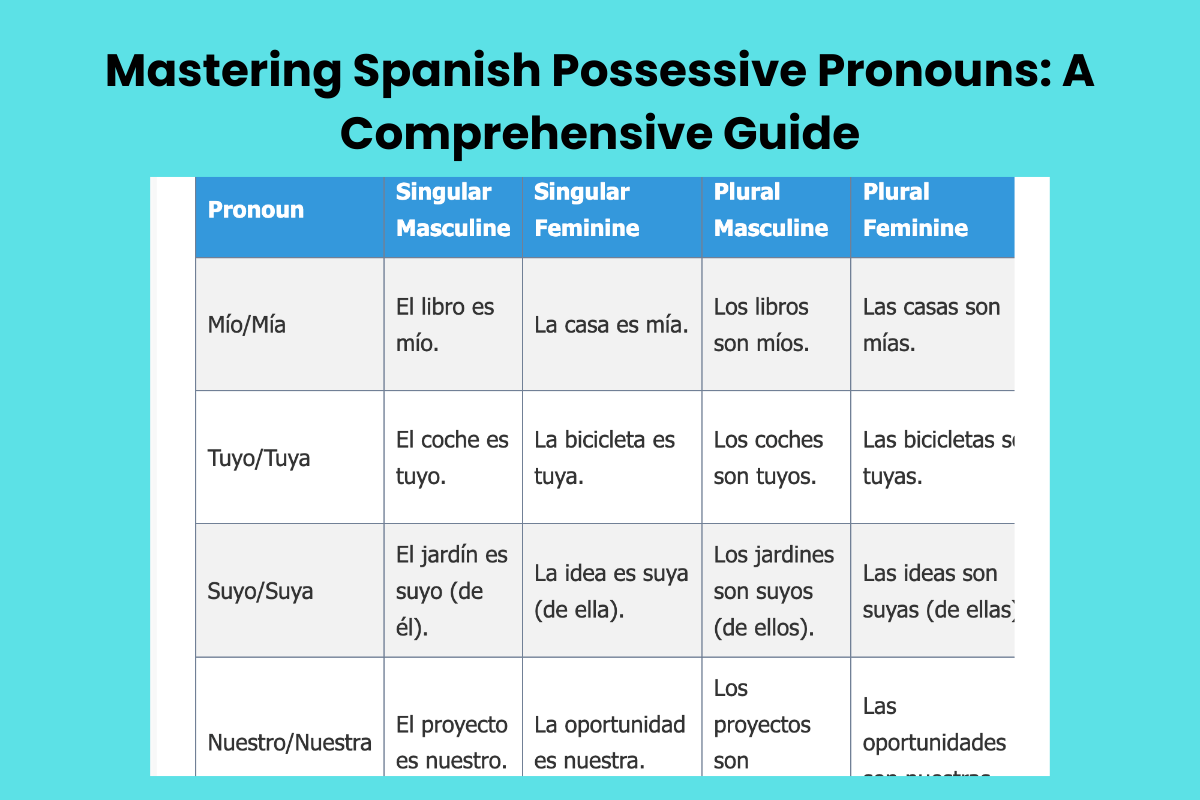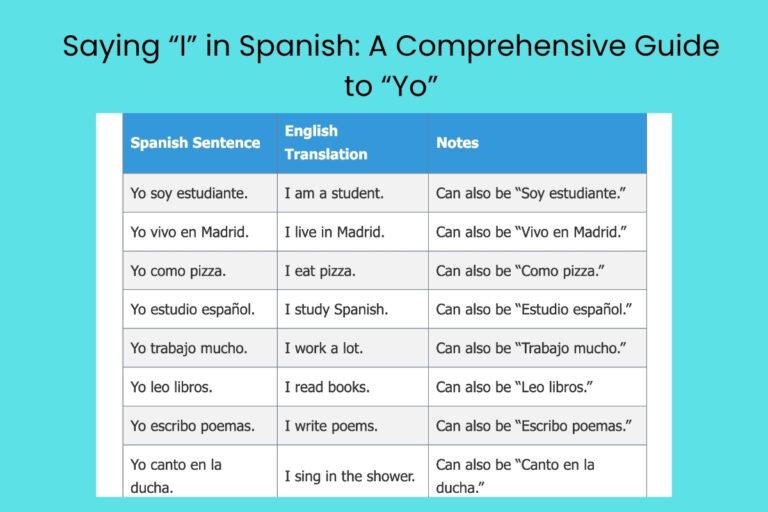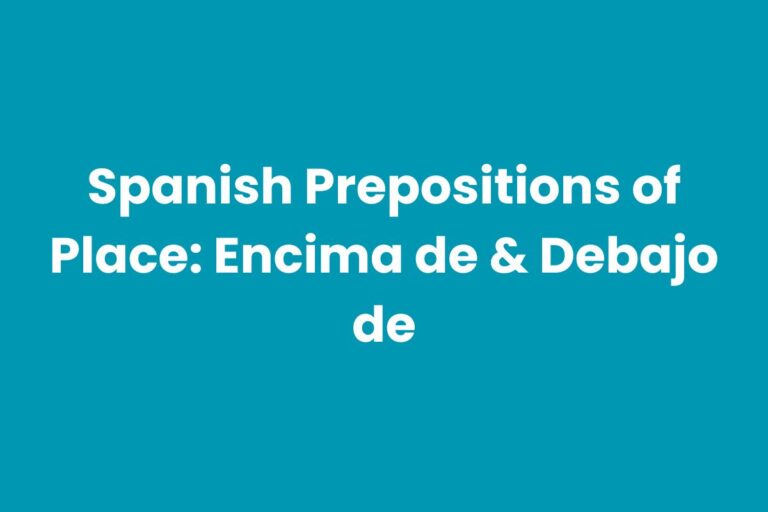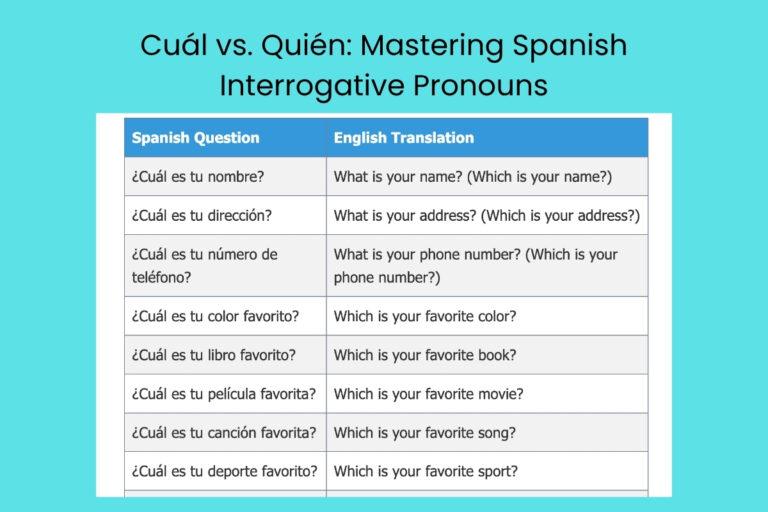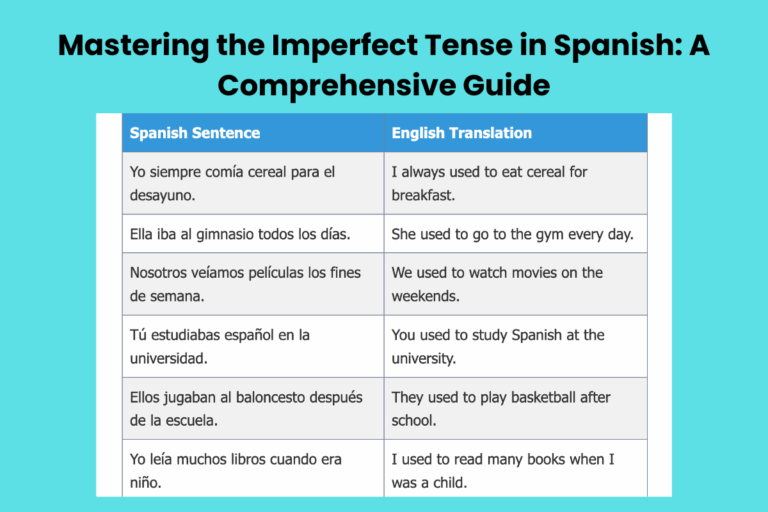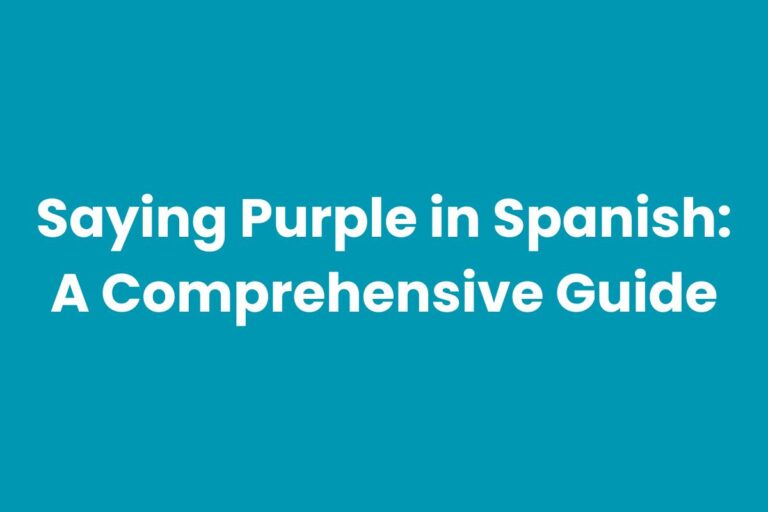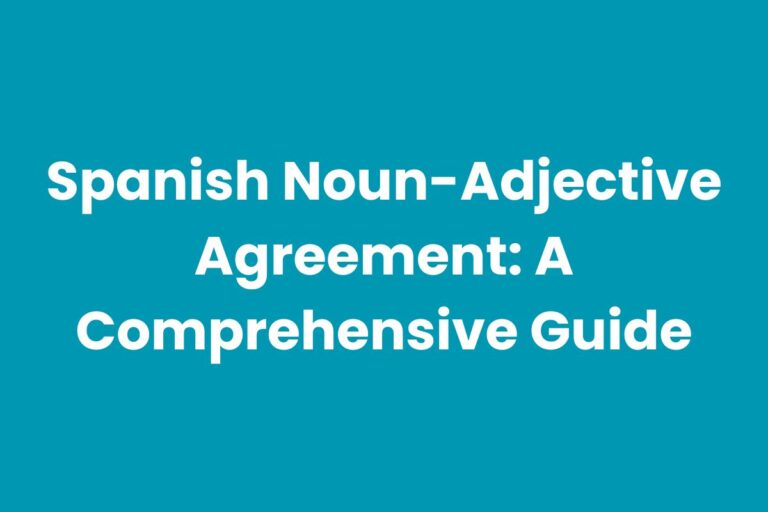Mastering Spanish Possessive Pronouns: A Comprehensive Guide
Understanding possessive pronouns in Spanish is crucial for expressing ownership and relationships. Just like in English, these pronouns replace nouns to indicate who or what possesses something.
This ability to clearly and efficiently convey possession is fundamental to effective communication in Spanish. This guide will provide a thorough exploration of Spanish possessive pronouns, covering their forms, usage, and common pitfalls.
Whether you’re a beginner or an advanced learner, this detailed explanation, complete with examples and practice exercises, will help you master this essential aspect of Spanish grammar.
Table of Contents
- Definition of Spanish Possessive Pronouns
- Structural Breakdown
- Types and Categories
- Examples
- Usage Rules
- Common Mistakes
- Practice Exercises
- Advanced Topics
- FAQ
- Conclusion
Definition of Spanish Possessive Pronouns
Spanish possessive pronouns are words that replace nouns to indicate ownership or possession. They function similarly to possessive pronouns in English (mine, yours, his, hers, its, ours, theirs).
These pronouns eliminate the need to repeat the noun being possessed, making sentences more concise and fluent. They are classified as pronouns because they stand in for a noun or noun phrase.
The function of a possessive pronoun is to show who or what something belongs to.
Possessive pronouns in Spanish agree in gender and number with the noun they replace, not with the possessor. This is a critical distinction from English, where possessive pronouns agree with the possessor.
Understanding this agreement is fundamental to using possessive pronouns correctly. For example, if you are referring to ‘my book’ and want to use a possessive pronoun to replace ‘book’, the pronoun must agree with ‘book’ (masculine, singular) rather than ‘I’ (the possessor).
Structural Breakdown
The structure of Spanish possessive pronouns involves understanding their different forms and how they relate to the possessor and the possessed item. There are two main categories: stressed (or absolute) forms and unstressed (or short) forms. Stressed forms are used independently, often after a form of the verb ser (to be), and they always agree in gender and number with the noun they replace. Unstressed forms, also known as possessive adjectives, precede the noun and function as determiners.
Unlike English, Spanish possessive pronouns also require careful attention to gender and number agreement. Each possessive pronoun has masculine singular, feminine singular, masculine plural, and feminine plural forms.
This agreement is crucial for grammatical correctness. Furthermore, the use of articles with possessive pronouns can vary depending on the context and the specific pronoun being used.
Mastering these structural elements is essential for accurate and natural-sounding Spanish.
Types and Categories
Stressed (Absolute) Forms
Stressed possessive pronouns stand alone and emphasize possession. They are often used after the verb ser (to be) to identify the owner of something. Because they stand alone, they must agree in both gender and number with the noun they are replacing. These forms are also referred to as “absolute” possessive pronouns because they don’t need to be attached to a noun.
The stressed possessive pronouns are: mío/mía/míos/mías (mine), tuyo/tuya/tuyos/tuyas (yours, informal singular), suyo/suya/suyos/suyas (his, hers, its, yours formal singular, theirs), nuestro/nuestra/nuestros/nuestras (ours), and vuestro/vuestra/vuestros/vuestras (yours, informal plural, Spain only). The form suyo/suya/suyos/suyas can be ambiguous and is often clarified using the preposition de + pronoun (e.g., de él – his, de ella – hers, de usted – yours (formal), de ellos/ellas – theirs).
Unstressed (Short) Forms
Unstressed possessive pronouns function as possessive adjectives and precede the noun they modify. They agree in number with the noun they modify, but their form is determined by the possessor. These forms are also considered possessive adjectives because they modify the noun directly. The unstressed forms are: mi/mis (my), tu/tus (your, informal singular), su/sus (his, her, its, your formal singular, their), nuestro/nuestra/nuestros/nuestras (our), and vuestro/vuestra/vuestros/vuestras (your, informal plural, Spain only).
The forms nuestro/nuestra/nuestros/nuestras and vuestro/vuestra/vuestros/vuestras agree in both gender and number with the noun they modify, while mi/mis, tu/tus, and su/sus only agree in number. Like the stressed form suyo/suya/suyos/suya, the unstressed form su/sus can be ambiguous and often requires clarification from context or the use of prepositional phrases.
Examples
Stressed Possessive Pronoun Examples
The following table provides examples of stressed possessive pronouns in various contexts, demonstrating their agreement in gender and number with the noun they replace.
| Pronoun | Singular Masculine | Singular Feminine | Plural Masculine | Plural Feminine | Example Sentence | English Translation |
|---|---|---|---|---|---|---|
| Mío/Mía | El libro es mío. | La casa es mía. | Los libros son míos. | Las casas son mías. | El coche rojo es mío. | The red car is mine. |
| Tuyo/Tuya | El coche es tuyo. | La bicicleta es tuya. | Los coches son tuyos. | Las bicicletas son tuyas. | El problema es tuyo. | The problem is yours. |
| Suyo/Suya | El jardín es suyo (de él). | La idea es suya (de ella). | Los jardines son suyos (de ellos). | Las ideas son suyas (de ellas). | El error es suyo (de usted). | The mistake is his/hers/yours (formal)/theirs. |
| Nuestro/Nuestra | El proyecto es nuestro. | La oportunidad es nuestra. | Los proyectos son nuestros. | Las oportunidades son nuestras. | El futuro es nuestro. | The future is ours. |
| Vuestro/Vuestra | El esfuerzo es vuestro. | La decisión es vuestra. | Los esfuerzos son vuestros. | Las decisiones son vuestras. | El éxito es vuestro. | The success is yours (plural, Spain). |
| Mío/Mía | Este bolígrafo es mío. | Esa pluma es mía. | Estos bolígrafos son míos. | Esas plumas son mías. | El perro pequeño es mío. | This pen is mine. |
| Tuyo/Tuya | ¿Es este paraguas tuyo? | ¿Es esta bufanda tuya? | ¿Son estos paraguas tuyos? | ¿Son estas bufandas tuyas? | ¿Es este trabajo tuyo? | Is this umbrella yours? |
| Suyo/Suya | El libro es suyo (de él). | La casa es suya (de ella). | Los libros son suyos (de ellos). | Las casas son suyas (de ellas). | El coche nuevo es suyo (de usted). | The book is his/hers/theirs/yours (formal). |
| Nuestro/Nuestra | El problema no es nuestro. | La culpa no es nuestra. | Los problemas no son nuestros. | Las culpas no son nuestras. | El destino es nuestro. | The problem is not ours. |
| Vuestro/Vuestra | El premio es vuestro. | La victoria es vuestra. | Los premios son vuestros. | Las victorias son vuestras. | El reino es vuestro. | The prize is yours (plural, Spain). |
| Mío/Mía | El ordenador es mío. | La tableta es mía. | Los ordenadores son míos. | Las tabletas son mías. | El gato atigrado es mío. | The computer is mine. |
| Tuyo/Tuya | El móvil es tuyo. | La mochila es tuya. | Los móviles son tuyos. | Las mochilas son tuyas. | El secreto es tuyo. | The phone is yours. |
| Suyo/Suya | El proyecto es suyo (de él). | La responsabilidad es suya (de ella). | Los proyectos son suyos (de ellos). | Las responsabilidades son suyas (de ellas). | El futuro brillante es suyo (de usted). | The project is his/hers/theirs/yours (formal). |
| Nuestro/Nuestra | El país es nuestro. | La cultura es nuestra. | Los países son nuestros. | Las culturas son nuestras. | El hogar es nuestro. | The country is ours. |
| Vuestro/Vuestra | El legado es vuestro. | La herencia es vuestra. | Los legados son vuestros. | Las herencias son vuestras. | El destino es vuestro. | The legacy is yours (plural, Spain). |
| Mío/Mía | Este reloj es mío. | Esa pulsera es mía. | Estos relojes son míos. | Esas pulseras son mías. | El coche antiguo es mío. | This watch is mine. |
| Tuyo/Tuya | ¿Es este abrigo tuyo? | ¿Es esta chaqueta tuya? | ¿Son estos abrigos tuyos? | ¿Son estas chaquetas tuyas? | ¿Es este sueño tuyo? | Is this coat yours? |
| Suyo/Suya | El cuadro es suyo (de él). | La pintura es suya (de ella). | Los cuadros son suyos (de ellos). | Las pinturas son suyas (de ellas). | El diseño es suyo (de usted). | The painting is his/hers/theirs/yours (formal). |
| Nuestro/Nuestra | El mundo no es nuestro. | La Tierra no es nuestra. | Los mundos no son nuestros. | Las Tierras no son nuestras. | El planeta es nuestro. | The world is not ours. |
| Vuestro/Vuestra | El futuro es vuestro. | La oportunidad es vuestra. | Los futuros son vuestros. | Las oportunidades son vuestras. | El momento es vuestro. | The future is yours (plural, Spain). |
Unstressed Possessive Adjective Examples
The following table showcases the use of unstressed possessive adjectives, highlighting their agreement in number with the noun they modify and how they precede the noun.
| Pronoun | Singular | Plural | Example Sentence | English Translation |
|---|---|---|---|---|
| Mi/Mis | Mi libro | Mis libros | Este es mi libro. | This is my book. |
| Tu/Tus | Tu casa | Tus casas | ¿Dónde está tu casa? | Where is your house? |
| Su/Sus | Su coche | Sus coches | Ese es su coche (de él/ella/usted/ellos/ellas). | That is his/her/your (formal)/their car. |
| Nuestro/Nuestra | Nuestro proyecto | Nuestros proyectos | Este es nuestro proyecto. | This is our project. |
| Vuestro/Vuestra | Vuestro esfuerzo | Vuestros esfuerzos | Ese es vuestro esfuerzo. | That is your effort (plural, Spain). |
| Mi/Mis | Mi amigo | Mis amigos | Mi amigo es muy simpático. | My friend is very nice. |
| Tu/Tus | Tu familia | Tus familias | Tu familia es muy importante. | Your family is very important. |
| Su/Sus | Su problema | Sus problemas | Su problema es complicado. | His/Her/Your (formal)/Their problem is complicated. |
| Nuestro/Nuestra | Nuestro país | Nuestros países | Nuestro país es hermoso. | Our country is beautiful. |
| Vuestro/Vuestra | Vuestro futuro | Vuestros futuros | Vuestro futuro es brillante. | Your future is bright (plural, Spain). |
| Mi/Mis | Mi perro | Mis perros | Mi perro es muy juguetón. | My dog is very playful. |
| Tu/Tus | Tu gato | Tus gatos | Tu gato es muy perezoso. | Your cat is very lazy. |
| Su/Sus | Su casa | Sus casas | Su casa es muy grande. | His/Her/Your (formal)/Their house is very big. |
| Nuestro/Nuestra | Nuestro coche | Nuestros coches | Nuestro coche es nuevo. | Our car is new. |
| Vuestro/Vuestra | Vuestra comida | Vuestros comidas | Vuestra comida es deliciosa. | Your food is delicious (plural, Spain). |
| Mi/Mis | Mi trabajo | Mis trabajos | Mi trabajo es interesante. | My job is interesting. |
| Tu/Tus | Tu escuela | Tus escuelas | Tu escuela es excelente. | Your school is excellent. |
| Su/Sus | Su libro | Sus libros | Su libro es famoso. | His/Her/Your (formal)/Their book is famous. |
| Nuestro/Nuestra | Nuestro idioma | Nuestros idiomas | Nuestro idioma es español. | Our language is Spanish. |
| Vuestro/Vuestra | Vuestra ciudad | Vuestros ciudades | Vuestra ciudad es bonita. | Your city is beautiful (plural, Spain). |
Comprehensive Examples
This section provides a comprehensive set of examples demonstrating both stressed and unstressed possessive pronouns in various sentence structures. These examples clarify the practical application of these grammatical forms in everyday communication.
| Sentence | Type | English Translation |
|---|---|---|
| Mi casa es pequeña, pero la tuya es grande. | Unstressed/Stressed | My house is small, but yours is big. |
| Nuestros problemas son diferentes de los suyos. | Unstressed/Stressed | Our problems are different from theirs. |
| Este libro es mío, no tuyo. | Stressed | This book is mine, not yours. |
| ¿Es este coche suyo (de usted)? | Stressed | Is this car yours (formal)? |
| Vuestros amigos son muy amables. | Unstressed | Your friends are very kind (plural, Spain). |
| La decisión es nuestra. | Stressed | The decision is ours. |
| Sus ideas son interesantes. | Unstressed | His/Her/Their/Your (formal) ideas are interesting. |
| Este bolígrafo es mío, ¿dónde está el tuyo? | Stressed | This pen is mine, where is yours? |
| Nuestra familia es muy unida. | Unstressed | Our family is very close. |
| El error fue suyo (de él). | Stressed | The mistake was his. |
| Su perro es muy juguetón. | Unstressed | His/Her/Your (formal)/Their dog is very playful. |
| La responsabilidad es nuestra. | Stressed | The responsibility is ours. |
| Mi trabajo es desafiante, pero el suyo parece más relajante. | Unstressed/Stressed | My job is challenging, but yours seems more relaxing. |
| Nuestros planes son secretos, a diferencia de los vuestros. | Unstressed/Stressed | Our plans are secret, unlike yours. |
| Este ordenador es mío, no suyo (de ella). | Stressed | This computer is mine, not hers. |
| ¿Es este paraguas suyo (de ellos)? | Stressed | Is this umbrella theirs? |
| Vuestros esfuerzos son apreciados. | Unstressed | Your efforts are appreciated (plural, Spain). |
| La victoria será nuestra. | Stressed | The victory will be ours. |
| Sus intenciones son buenas. | Unstressed | His/Her/Their/Your (formal) intentions are good. |
| Este coche es mío, ¿dónde está el suyo (de usted)? | Stressed | This car is mine, where is yours (formal)? |
| Nuestra amistad es inquebrantable. | Unstressed | Our friendship is unbreakable. |
| El éxito fue suyo (de ella). | Stressed | The success was hers. |
| Su gato es muy cariñoso. | Unstressed | His/Her/Your (formal)/Their cat is very affectionate. |
| La decisión final es nuestra. | Stressed | The final decision is ours. |
Usage Rules
Agreement in Gender and Number
The most important rule for using Spanish possessive pronouns is that they must agree in gender and number with the noun they replace or modify. This is a key difference from English, where possessive pronouns agree with the possessor. For stressed pronouns, this agreement applies to both gender and number. For unstressed pronouns, nuestro/nuestra/nuestros/nuestras and vuestro/vuestra/vuestros/vuestras agree in both gender and number, while mi/mis, tu/tus, and su/sus only agree in number.
For example: El libro es mío (The book is mine – masculine singular), La casa es mía (The house is mine – feminine singular), Los libros son míos (The books are mine – masculine plural), Las casas son mías (The houses are mine – feminine plural). Notice how the form of mío changes to agree with the noun it replaces.
Using with Articles
The use of definite articles (el, la, los, las) with possessive pronouns depends on the context and the specific pronoun. Generally, definite articles are not used before stressed possessive pronouns when they follow the verb ser. However, they can be used for emphasis or to specify which one is being referred to.
For example: El coche es mío (The car is mine – no article needed), but El mío es rojo (Mine is red – article used because it’s the subject of the sentence). Unstressed possessive pronouns (possessive adjectives) always precede the noun and do not use a separate article: Mi casa (My house), not La mi casa.
Omission of Possessive Pronouns
In some cases, possessive pronouns can be omitted in Spanish when the meaning is clear from the context. This is particularly common when referring to body parts or personal items.
However, this omission is more common with unstressed possessive adjectives than with stressed possessive pronouns.
For example: Instead of saying Me lavo mis manos (I wash my hands), you can say Me lavo las manos (I wash the hands), where the possessive is implied. However, omitting stressed possessive pronouns is less common and can often lead to ambiguity.
Common Mistakes
One of the most common mistakes is failing to agree in gender and number with the possessed noun. For example, saying El libro es mía (incorrect) instead of El libro es mío (correct). Another common error is using the incorrect form of suyo/su, leading to ambiguity. It’s crucial to use clarifying phrases like de él, de ella, de usted, de ellos, de ellas when necessary.
Another mistake is using English possessive pronoun rules in Spanish. Remember that Spanish possessive pronouns agree with the noun they replace, not the possessor.
For instance, saying “My car is red, but hers is blue” would translate to “Mi coche es rojo, pero el suyo (de ella) es azul.” Failing to clarify the possessor could cause confusion.
| Incorrect | Correct | Explanation |
|---|---|---|
| La libro es mío. | El libro es mío. | Incorrect gender agreement. Libro is masculine, so the pronoun must be mío. |
| Mi casas son grandes. | Mis casas son grandes. | Incorrect number agreement. Casas is plural, so the possessive adjective must be mis. |
| Su es muy amable. | Él es muy amable. / Usted es muy amable. | Su is a possessive adjective, not a pronoun. It needs a noun. If referring to a person, use the appropriate pronoun. |
| El coche es de yo. | El coche es mío. | Incorrect use of preposition. Possessive pronouns replace the “de + pronoun” construction. |
| Mi coche es rojo pero el suyo es azul (without clarification). | Mi coche es rojo pero el suyo (de ella) es azul. | Ambiguous. The possessor is not clear (his/hers/yours/theirs). |
| La casa es nuestro. | La casa es nuestra. | Incorrect gender agreement. “Casa” is feminine. |
| Mis hermano. | Mi hermano. | Incorrect number agreement. “Hermano” is singular. |
| Sus es bonito. | Su coche es bonito. / El de él/ella/usted es bonito. | “Sus” requires a noun. Alternatively, use the correct pronoun. |
| El libro es de tú. | El libro es tuyo. | “Tuyo” is the correct possessive pronoun form. |
| Mi padres son simpáticos pero el suyos no. | Mi padres son simpáticos pero los suyos no. | Missing “los” before “suyos” to indicate plural masculine. |
Practice Exercises
Exercise 1: Fill in the Blanks
Fill in the blanks with the correct form of the possessive pronoun.
| Question | Answer |
|---|---|
| Este libro es ____ (I). | mío |
| ¿Es esta casa ____ (you, informal)? | tuya |
| Los coches son ____ (they). | suyos |
| El proyecto es ____ (we). | nuestro |
| Las decisiones son ____ (you, plural, Spain). | vuestras |
| Ese perro es ____ (I). | mío |
| ¿Es ese gato ____ (you, informal)? | tuyo |
| Los problemas son ____ (he). | suyos |
| El país es ____ (we). | nuestro |
| Las oportunidades son ____ (you, plural, Spain). | vuestras |
Exercise 2: Translation
Translate the following sentences into Spanish using possessive pronouns.
| English | Spanish |
|---|---|
| This house is mine. | Esta casa es mía. |
| Is that car yours (informal)? | ¿Es ese coche tuyo? |
| The books are theirs. | Los libros son suyos. |
| The project is ours. | El proyecto es nuestro. |
| The decisions are yours (plural, Spain). | Las decisiones son vuestras. |
| That dog is mine. | Ese perro es mío. |
| Is that cat yours (informal)? | ¿Es ese gato tuyo? |
| The problems are his. | Los problemas son suyos (de él). |
| The country is ours. | El país es nuestro. |
| The opportunities are yours (plural, Spain). | Las oportunidades son vuestras. |
Exercise 3: Error Correction
Correct the errors in the following sentences.
| Incorrect | Correct |
|---|---|
| La libro es mío. | El libro es mío. |
| Mi casas son grandes. | Mis casas son grandes. |
| Su es muy amable. | Él es muy amable. / Usted es muy amable. |
| El coche es de yo. | El coche es mío. |
| La casa es nuestro. | La casa es nuestra. |
| Mi hermano son altos. | Mi hermano es alto. |
| Sus es bonito. | Su coche es bonito. / El suyo es bonito. |
| El libro es de tú. | El libro es tuyo. |
| Las coches es tuyas. | Los coches son tuyos. |
| Mi padres es simpático. | Mis padres son simpáticos. |
Advanced Topics
Formal Usage
In formal Spanish, the pronoun usted (formal you) is used instead of tú. This also affects the possessive pronouns used. Instead of tuyo/tuya/tuyos/tuyas and tu/tus, you would use suyo/suya/suyos/suyas and su/sus. However, it’s important to remember that suyo/su can be ambiguous and may require clarification using de usted.
For example: Instead of asking ¿Es esta tu casa? (Is this your house? – informal), you would ask ¿Es esta su casa (de usted)? (Is this your house? – formal). The added de usted clarifies that you are referring to the formal “you.”
Regional Variations
While the basic rules of Spanish possessive pronouns remain consistent across different regions, there are some variations in usage. In Spain, the pronoun vosotros/vosotras (informal plural you) is commonly used, along with its corresponding possessive pronouns vuestro/vuestra/vuestros/vuestras. However, in Latin America, ustedes is typically used instead, and the possessive pronouns suyo/suya/suyos/suyas and su/sus are used to refer to both formal and informal plural “you.”
Understanding these regional variations is crucial for effective communication and avoiding misunderstandings. While using vuestro/vuestra/vuestros/vuestras in Latin America would not be grammatically incorrect, it might sound unusual or overly formal.
FAQ
- What is the difference between stressed and unstressed possessive pronouns?
Stressed possessive
pronouns stand alone and emphasize possession, while unstressed possessive pronouns (possessive adjectives) precede the noun they modify.
- How do I avoid ambiguity when using suyo/su?
Clarify using phrases like de él (his), de ella (hers), de usted (yours, formal), de ellos/ellas (theirs) to specify the possessor.
- Do I need to use articles with possessive pronouns?
Generally, no article is needed with stressed possessive pronouns after ser, but articles can be used for emphasis. Unstressed possessive pronouns do not use separate articles.
- Can I omit possessive pronouns in Spanish?
Yes, possessive pronouns can be omitted when the meaning is clear from the context, especially with body parts or personal items, but this is more common with unstressed forms.
- How do possessive pronouns agree in gender and number?
Possessive pronouns agree in gender and number with the noun they replace or modify, not with the possessor.
- What are the regional variations in using possessive pronouns?
In Spain, vosotros/vosotras and vuestro/vuestra/vuestros/vuestras are used for informal plural “you.” In Latin America, ustedes is used, and suyo/suya/suyos/suyas and su/sus are used for both formal and informal plural “you.”
- What are some common mistakes to avoid?
Failing to agree in gender and number, using the incorrect form of suyo/su, and applying English possessive pronoun rules to Spanish are common mistakes.
- What is the formal way to use possessive pronouns?
In formal Spanish, use suyo/suya/suyos/suyas and su/sus with usted, and clarify with de usted when necessary.
- Where can I find more practice exercises?
Numerous online resources and Spanish textbooks offer additional exercises to practice using possessive pronouns.
- How can I improve my understanding of possessive pronouns?
Practice regularly, pay attention to gender and number agreement, and familiarize yourself with the different forms and their usage in various contexts.
Conclusion
Mastering Spanish possessive pronouns is essential for expressing ownership and building fluency in Spanish. Understanding the different forms, agreement rules, and common pitfalls will enable you to communicate more effectively and accurately.
By practicing regularly and paying attention to context, you can confidently use possessive pronouns in your Spanish conversations and writing. Keep practicing, and you’ll find using Spanish possessive pronouns becomes second nature!

